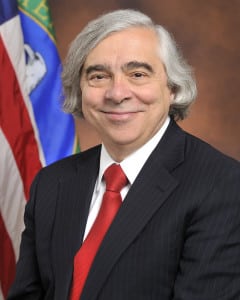
Focusing only on the innovation or the deployment of clean energy technology will not be enough to meet the world’s climate goals, U.S. Secretary of Energy Ernest Moniz said Monday at a Climate Week presentation in New York. “The way we look at it is deployment and innovation are actually completely synergistic and complementary,” he said. “In fact, they often form the cycle that drives down the cost of these technologies.”
Moniz highlighted the Mission Innovation initiative under which 20 countries have pledged to double their clean energy research and development funding by 2021The initiative was launched last year in Paris at the 21st session of the Conference of the Parties to the United Nations Framework Convention on Climate Change. “Mission Innovation really is about putting innovation now at the center of the discussion about solutions to climate change,” he said.
Some argue there is already plenty of technology and that the world instead should focus on deploying that technology, according to Moniz. Those people are not wrong, he said, but neither are those who look to innovation for climate solutions.
Technologies such as wind and solar energy generation and energy efficient light bulbs are near the end of the innovation trajectory and are ready for deployment, he said, “but we are only at the beginning of that trajectory for a whole bunch of other technologies including large-scale storage, carbon capture, novel nuclear, we can go on and on. This is a long process. [Innovation and deployment] are not in any conflict whatsoever; quite the contrary: they are essential complements going forward.”
One area of innovation Moniz specifically mentioned is advanced carbon solutions. “I think we’re going to need to have more breakthroughs, including breakthroughs in what I would call advanced carbon management for the long term like large-scale CO2 utilization. For example, negative carbon technologies,” he said.
In an effort to support these technologies, the administration has included new tax incentives in its past two budget requests. The requests called for $2 billion worth of new refundable investment tax credits for new-build and retrofit carbon capture and storage projects, as well as an additional new refundable sequestration tax credit totaling $50 per metric ton of CO2 for non-utilization storage and $10 per metric ton for utilization-based storage such as enhanced oil recovery.
“Certainly the administration, states, [and] cities … are doing their part,” Moniz said. “In the United States we need now Congress to step up and put a legislative underpinning around a lot of these activities.”
Moniz said he feels fairly confident that Congress will do that just that. “I will state quite frankly I have a bet riding on the fact that we will have economy-wide legislation in the Congress by the end of this decade.”